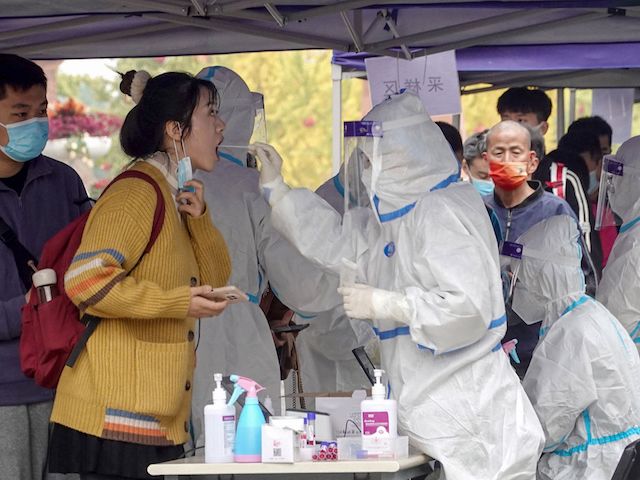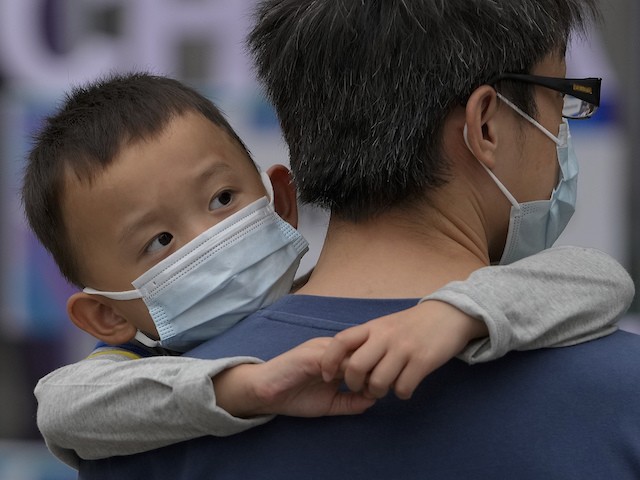The Chinese Communist Party has imposed coronavirus lockdowns in recent days on residents near both the country’s southern borders — near Myanmar — and northern borders — near Russia.
“Thousands of Ruili residents posted complaints on social media platforms broadcasting a press conference by city officials to address Covid-19 [Chinese coronavirus] control on Tuesday [October 26],” the South China Morning Post (SCMP) reported October 28. “Some said their patience and savings had run out because there was ‘no light at the end of the tunnel’ after the city had endured more than 200 days in lockdown.”
Ruili is located in southwestern China’s Yunnan province along the country’s border with Myanmar. The frontier city’s economy — reliant on cross-border trade between China and Myanmar — has been dormant since March, when Beijing ordered the shutdown of the Jiegao border bridge, a major trade and travel link between China and Myanmar.
“Ruili’s streets are now deserted after China imposed strict Covid-19 [Chinese coronavirus] prevention measures along its border with Myanmar in March, including closing the Jiegao bridge, repatriating immigrants found to be in the city illegally, erecting barbed-wire fences on the border, and enforcing a prolonged lockdown of Ruili,” SCMP recalled on Thursday.

A resident undergoes a nucleic acid test for the coronavirus in Xian in China’s northern Shaanxi province on October 20, 2021. (STR/AFP via Getty Images)
Ruili’s deputy mayor, Yang Mou, said on October 26, the city “would not relax the containment measures because the pandemic prevention and control situation in Ruili remained ‘severe and complex,'” SCMP relayed.
Yang, echoing an official narrative promoted by Chinese Communist Party (CCP) officials, blamed Ruili’s coronavirus cases on the city’s “proximity to Myanmar,” implying that they were largely imported despite the months-long closure of Jiegao bridge.
China’s continued lockdowns in Ruili come as the Communist Party has increasingly ordered other Chinese cities to seal off their own residential communities in response to a nationwide coronavirus resurgence that began on October 17.
“Another major port city in Northeast China’s Heilongjiang Province, Heihe, bordering Russia in the north, was urgently put under a citywide lockdown on Thursday after one confirmed COVID-19 [Chinese coronavirus] case was found,” the state-run Global Times reported on October 28. “It is the third city that has imposed such rules in the latest rebound of the epidemic in China, following China-Mongolia border city Ejin Banner and Northwest China’s transport hub Lanzhou. ”
“Residential communities and rural villages in Heihe will close off, leaving only one entry-exit that allows one person per household to pass once every two days, given that the neighborhoods have not reported confirmed COVID-19 [Chinese coronavirus] cases,” according to the newspaper. “Gathering activities are also canceled and banned across the city.”

A man carries a child, both wearing face masks to help curb the spread of the coronavirus, walk on a street in Beijing, September 12, 2021. (AP Photo/Andy Wong)
“Traffic control will be in place, suspending all bus and taxi services, the notice said, adding that vehicles and personnel are not allowed to leave the city,” the Global Times reported.
The CCP says it traced China’s latest coronavirus epidemic to a Chinese tour group that traveled from Shanghai to China’s Inner Mongolia autonomous region in early October. Beijing claims the tour group’s members contracted the Chinese coronavirus from an unspecified foreign source during their travels within Inner Mongolia, then spread the infections nationwide.
“The China-Mongolia border city of Ejin Banner in North China’s Inner Mongolia Autonomous Region, one of the hard-hit regions that came under the spotlight for being the suspected source of the transmission chain in the latest COVID-19 [Chinese coronavirus] flare-ups, tightened lockdown management for stranded tourists and local residents on Wednesday [October 27],” according to the Global Times.

COMMENTS
Please let us know if you're having issues with commenting.